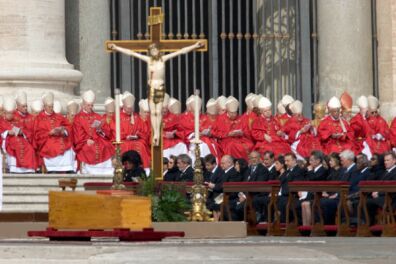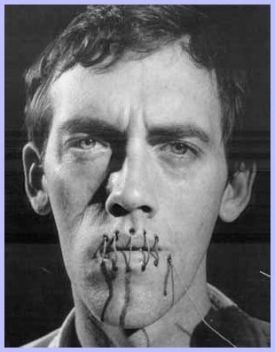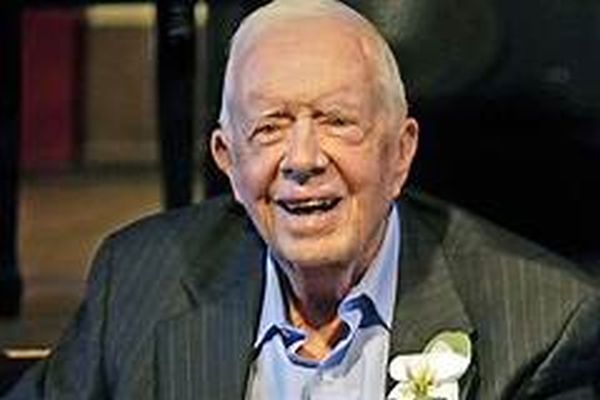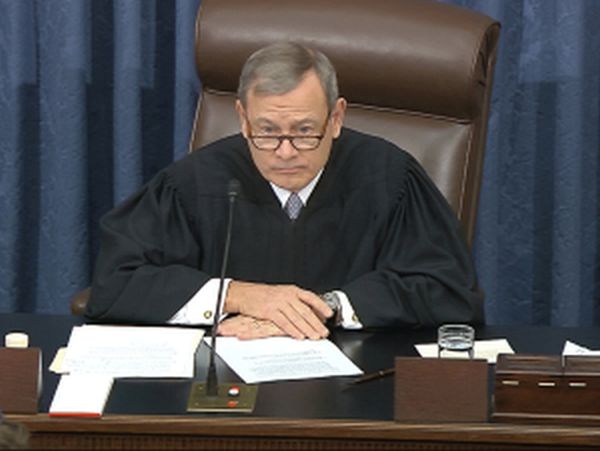The Hollywood Turkey Farm
From The Spectator of LondonThe American papers have lately been filled with stories about the heartbreak in Hollywood over the great box-office slump. There were 6 per cent fewer cinema-goers in 2005 than in 2004. More worrying to the studios is the fact that this is the third consecutive year of decline. There are lots of proposed explanations for this state of affairs, but it’s hard for me to believe that there is not some connection between the shrinking audience for and the deteriorating quality of films. If you want an illustration of what’s happened, you cannot do better than compare the original version of Yours, Mine and Ours, made in 1968, and the remake, which came out in America at the end of last year. Both are bad, even awful movies, but they are bad in very different ways. The original stars Henry Fonda and Lucille Ball as widower and widow, he with ten children, she with eight, who marry and amalgamate their families. The stars are both at least 15 years too old for their parts — in the closing passages Miss Ball, who was 57 at the time, is supposed to be having another baby — and have zero plausibility as a couple. The memoir by Helen North Beardsley on which the film was based obviously belongs to the philoprogenitive era that reached its peak in 1964, the year of its publication, and its climax consists of Mr Fonda’s lecture to his oldest stepdaughter as he is escorting her mother to the maternity ward about the dangers of teenage sex and the mature joys of family life. The world of youthful rebellion and free love associated with the year 1968 is glanced at but disdainfully dismissed.
Like Mrs Beardsley’s memoir, the film-makers belonged to the immediate post-war era when movie audiences were still largely grown-up and middle class and expected to have their bourgeois ‘values’ confirmed and their appetite for sentiment and a bit of titillation satisfied. Say what you like about the cynicism with which the Hollywood establishment set out to gratify its audience’s expectations, or the relentlessly upbeat and unbelievable way in which suitable morals were tacked on to inappropriate material, but their films inhabited the same moral universe that ordinary people did. Now, instead of a troubled audience of grown-ups looking for reassurance about uncertain moral principles, the audience for the remake of Yours, Mine and Ours are children looking to see the parental authority figures in their lives get a thorough pummelling before learning to put the kids’ wishes ahead of their own. There is pandering in both the 1968 version and the 2005 version, but the former panders to parents who were worried about doing the right thing, while the latter panders to kids worried that their parents might make them do something they don’t want to do.
To some extent this is a natural consequence of the change in movie demographics. Nowadays there are very few adults who go to the pictures regularly and very few of the early-teen set who don’t. It’s one of the few opportunities they have to see other kids unchaperoned and to be seen by them. On a trip to the multiplex in America today you are even more likely to find an opportunity to study high-school mating rituals in the lobby than you are on screen, whereas if grown-ups see films at all, they do so only after waiting for them to come out on DVD. This means that the dollars of 12- to 16-year-olds, who frequently see their favourite movies more than once, are much more powerful in the marketplace than those of their parents, who are left to wonder at the difficulty of finding anything on Netflix worth watching — anything, that is, apart from car chases, explosions and computer-generated imagery, which make films look like video games.
But there is more to the decline of movie quality than the demands of a largely teenage marketplace. To understand why, we have to go back to the Copernican revolution in movie-making that took place in the 1970s. Then film-makers, led by Steven Spielberg and George Lucas, managed to break free of their audience’s traditional expectation that movies would look like life. Partly because of the growing youthfulness of their audience, but partly too because of that audience’s media savvy — by the time of Jaws or Star Wars anyone under 30 would have been watching television all his life — the old tricks and conventions by which previous generations had been persuaded to regard the movies as looking real wouldn’t work anymore. Spielberg and Lucas responded by letting the audience in on the trick: that is by glorying in their artifice and indebtedness to other films rather than discreetly hiding these things. No more were movies expected to look like life; instead they were expected to look like other movies. When the Indiana Jones series began in 1981 with Raiders of the Lost Ark, its tag-line, ‘The Hero is back’, was understood by everybody to mean the movie hero. That’s why it was set in the 1930s and its villains were Nazis. It was supposed to look like one of the Saturday morning serials of the age in which it was set, only with incomparably superior production values.
At first this kind of allusive, post-modern movie-making resulted in a very entertaining product and nobody noticed any very worrying side-effects of the breaking of the link between reel and reality. Most critics and film-makers continue to be unconcerned, because po-mo playfulness is such a good deal for them. The reputation of Quentin Tarantino among cinéastes has not suffered — has in many quarters been enhanced — even as his movies have become ever more cartoonish. Only in movieland could Uma Thurman bloodily dispatch scores of armed assailants as she does in Kill Bill, Volume 1, but then what’s wrong with living in movieland? We have been doing it for 30 years now.
The trouble is that movieland is beginning to colonise even movies that are trying to be serious and grown-up, especially those dealing with politics, government, diplomacy and military life. When Superman (Christopher Reeve) told Lois Lane (Margot Kidder) ‘I’m here to fight for truth, and justice, and the American way,’ she replied with a laugh: ‘You’re going to end up fighting every elected official in this country!’
The joke made no sense unless the audience understood that, in movieland, all politicians were vicious and corrupt, especially those involved in any way with national security. By the 21st century, even alleged documentaries like Fahrenheit 9/11 and The Corporation were set in movieland, because audiences had learnt to expect not new insights or even much in the way of new information from movies, but a confirmation of what they already knew or thought they knew about where the world’s villainy comes from. That’s why the 2004 remake of The Manchurian Candidate, which purported to deal with the terrorist threat, ignored the actual terrorists and made the bad guys a large multinational corporation and its agents and hirelings in government. Hollywood’s latest fictional treatment of the war on terror, Stephen Gaghan’s Syriana, starring George Clooney and Matt Damon, does exactly the same thing, putting forward the bizarre contention that the major threat to the progressive forces of democracy, economic liberalisation and women’s rights in the Middle East comes not from terrorist jihadists but from — you’ll never guess — the CIA in cahoots with Big Oil. After all, the CIA, the Pentagon and large American corporations have been the home of Hollywood villainy for 35 years, right up there with Nazi Germany.
Nobody expects movieland to change just because the world does, not even those who may be dimly aware of America’s perilous efforts to bring democracy to Iraq over the last three years. Interestingly, at least as recently as True Lies (1994), it was still possible for Arab terrorists to appear as movie villains, but post-9/11 it is not. There have been in the last couple of months two movies released in America that are sympathetic to Islamic jihadist suicide-bombers (The War Within and Paradise Now) while movies like Gunner Palace or Jarhead portray American soldiers as victims — either of their leaders or of the military culture itself. It’s hard to remember the last time we saw an old-fashioned flick in which we’re meant to cheer the Yanks as they biff the enemy. Obedient to the old maxim, perhaps, Hollywood prefers to stick with the devil it knows, and boy does it stick! Thus Mr Clooney could be found in his other recent outing, Good Night, and Good Luck, banging the drum on behalf of those who, absurdly, still think it daring to deplore McCarthyite anti-communism.
So charmed is he by the idea of himself as the lone dissenter, daring to take up a contrarian view against a political and cultural monolith, that Mr Clooney appears to believe that opposing the war and the Bush administration in Hollywood is a dangerous thing to do, just as opposing McCarthy once (very briefly) was. ‘When we started, nobody was encouraging us,’ he told Benjamin Svetkey of Entertainment Weekly. ‘We jumped in on our own. And there was no reason to think it was going to get any easier. But people in Hollywood do seem to be getting more comfortable with making these sorts of movies now. People are becoming braver.’
Like the frog in boiling water, we’ve grown so used to the meta-politics of movieland that we hardly think to criticise it anymore. Movies that are made for children, like Ridley Scott’s Kingdom of Heaven, happily import into the Middle Ages the 21st century’s politically correct attitudes to religion, and no one thinks twice about it. One measure of the extent to which movieland inhabits its own little world is the number of films about celebrities, or demi- celebrities. Four of the five nominees for Best Picture at the last Oscars were about famous people. The Aviator was so stuffed with them that the impersonations of well-known figures in Hollywood history became the point of the film.
What happened to the anonymous people, to the little guys — and gals — that Hollywood used to do so well? Even the new Yours, Mine and Ours promotes Papa from a humble warrant officer in the navy to commandant of the coast guard — a man who tries to teach his brood teamwork as they crew his yacht, My Way. Meanwhile, Mama goes from being a navy nurse to being a designer of high-end handbags who is on the brink of her big breakthrough. Like the mother in Cheaper by the Dozen, by the way, she is allowed to keep her career, while Dad is expected to give his up in order to devote more of his attention to the children. That kind of thing may not happen very much in the real world — I doubt that it happens very much even in Hollywood — but the movie business has got out of the habit of expecting its products to look anything like reality. So long as that is the case — and so long as its principal audience of younger teens doesn’t know much about reality outside the movies — we can’t expect the movies to get any better.
Discover more from James Bowman
Subscribe to get the latest posts to your email.







